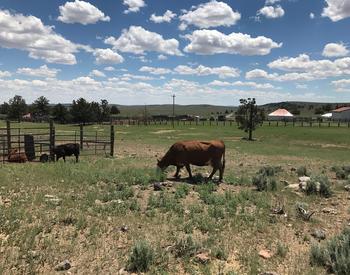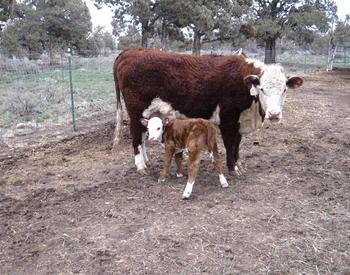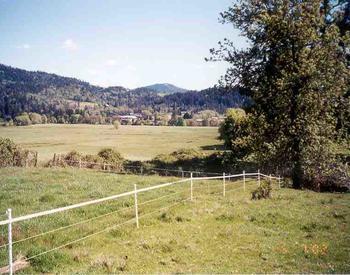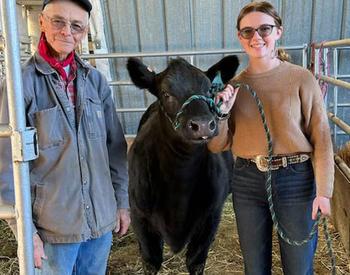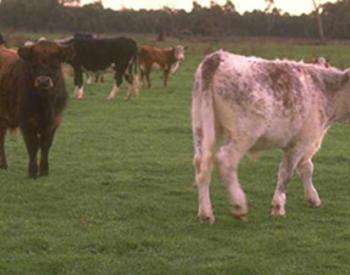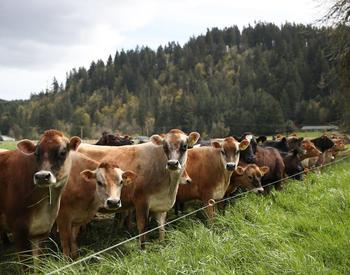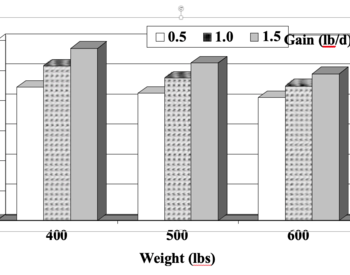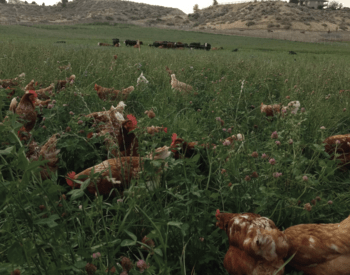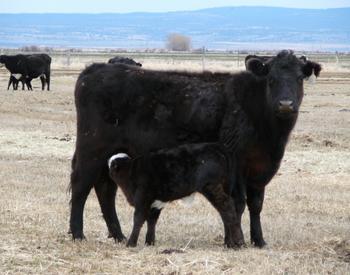We all know that weaning is the removal of a suckling calf from the cow. But what might not be so obvious are all the stressors and impacts associated with weaning, both for the calf and the cow.
Weaning can also be stressful for the owner of the animals, especially if the weaned calves are placed in a pen near a person’s bedroom window. As animal managers, we should try to make weaning as stress-free as we can, while keeping productivity and profitability in line with our goals.
There are many considerations for weaning, including timing, preparation, method and post-weaning management. Different strategies affect performance of the calf (market weight, health, etc.) and the cow (reproductive efficiency, cull weights, health, etc.) and therefore can affect profitability.
The information below is a summary of several publications (see references below). Full benefit to the agricultural producer comes from the study of the materials and in-depth consideration of incorporating them into the ranch management plan.
Time of weaning
Several factors can influence time of weaning, including loss of dam, forage resources and cow body condition, sale time and other ranch activities. Calves can be weaned any time after their rumens become functional, that is, when their digestive system can process whole feeds.
If a newborn calf is unable to nurse its dam, use of a surrogate cow may be the best way to raise the calf until weaning. Bottle-fed calves can be weaned after one month of age, while calves nursing cows are weaned between 3 and 8 months of age. It is usually best to wean at the older age.
For comparing weight of calves weaned at different ages, a 205-day weaning weight is sometimes calculated. This “205-day WW” is the calf weight adjusted for birth date and weaning date and does not infer that calves should necessarily be weaned at that age.
One potential management tool for the breeding program that is related to weaning is a practice called 48-hour calf removal. This temporary removal of calves from cows 48 hours prior to breeding has been shown to improve first-service conception rates.
If forage is in short supply or cow body condition is low, calves can be weaned early (before 8 mo). This preserves cow energy reserves to allow for development of the new calf inside her and keep her in good shape for timely rebreeding after that calf is born.
Studies have shown that in times of forage shortages, it can be economical to wean calves early. In those cases, the cost of feeding early weaned calves was more than offset with improved reproductive performance of cows that were kept in a body condition that favored efficient reproductive performance.
Most calves are born in the spring and weaned in the fall. This causes the supply of weaned calves to be highest in the fall. This high supply leads to seasonally low calf prices. Consider how changing calf weaning date can affect sale weight and price. Although weaning date may revolve around other routines, consider making weaning a higher priority.
Preparation for weaning
Preparing calves well in advance to actual weaning time has benefits well worth the effort. Because immune function and response is lower in times of stress, and weaning can be stressful, many veterinarians suggest that vaccinations be given 3–4 weeks prior to weaning and that deworming be done after weaning. This not only lessens the stress at weaning, but also improves immune response to the vaccines and anthelmintics.
Other management procedures, such as branding, castrating and dehorning should be done well in advance of weaning. Also, it is a good idea to make sure that, before weaning, calves are used to eating the intended post-weaning diet. You can feed that diet to both cows and calves for a short period of time, about two weeks, or provide it in a creep feeder — narrow passages into a feeding area are set up so the calves creep in, but larger cows cannot.
Although creep feeding can be used to acclimate calves to a post-weaning diet, its primary use is to provide supplemental feed to nursing calves in order to increase weaning weight. It is of benefit to calves, but not a direct benefit to cows. Economically, a good rule of thumb is that calf prices at sale time ($/lb) should be 10 times the cost of the creep feed ($/lb). See references for more detail.
Make sure that the post-weaning diet is appropriate for the age of calf, including forage quantity and quality, and contains a vitamin/mineral mix and plenty of fresh, accessible water. For the very young calf, this means a special calf starter diet, either bagged or specially formulated feed.
For older calves, good quality forage (fall pasture regrowth, irrigated summer pasture or very good quality hay/baleage) will suffice, depending on target performance. Make sure they can safely reach water and know how to drink it. If the calves are unfamiliar with drinking water from a trough, let the water overflow a bit so that it makes a trickling sound. Work with a nutrition consultant or veterinarian to provide a vitamin/mineral mix.
Weaning method
Whether your weaning consists of total separation of cows and calves or the relatively new, low-stress technique of fenceline weaning, make sure you address nutrition and health measures. Total separation weaning can be accomplished with good success if pre-weaning and post-weaning management address stress, health and nutritional management sufficiently.
For traditional weaning, it is best to have cows and calves together in the place where calves will stay. Remove cows to a new location out of sight and sound from calves. Leave calves in familiar surroundings. It is normal for cattle to bawl for several days.
In fenceline weaning, cows and calves are placed on opposite sides of a strong fence (woven wire or multiple-strand, high-tensile wire). As with total separation weaning, cows are moved and calves remain in the initial pasture. Although the cattle are seldom seen challenging the fence, they have some nose-to-nose contact, but spend the majority of time grazing away from the fence.
Fenceline visits gradually decrease over the first five days and the weaning process is complete within a week. Studies have shown these calves bawled less and gained more weight during the weaning process than with complete separation weaning.
Post-weaning management
Much information is available on post-weaning management. Preconditioning is a nutrition and health management practice that prepares calves as stocker/feeder cattle in the next phase of production. Study the information on this important topic and consider having a preconditioning period for calves before they are moved to their next destination.
A 45-day post-weaning period before shipping has been shown to be beneficial in comparison to shipping calves immediately after weaning. If you cannot provide this preconditioning period, make sure newly weaned calves are rested, fed and watered before shipping.
Glenn Selk, Oklahoma State University, has some good advice on being proactive with marketing strategy. He suggests you provide buyers with the details of your preconditioning program and let them know where your calves can be purchased.
He said: “Whether you participate in an organized value-added calf program or whether you simply sell your calves on the regular sale date at the closest market, it makes good business sense to tell buyers that your good calves are available for sale. Don’t just rely on others to tell your story. This fall, promote the good quality, healthy cattle that you raise. They deserve it!!”
References for further study
- Fenceline contact of beef calves with their dams at weaning reduces the negative effects of separation on behavior and growth rate. E.O. Price, J.E. Harris, R.E. Borgwardt, M.L. Sween, and J.M. Connor. Journal of Animal Science. 2003 81: 116-121.
- The effects of weaning beef calves in two stages on their behavior and growth rate. D.B. Haley, D.W. Bailey, and J.M. Stookey. Journal of Animal Science, September 1, 2005; 83(9): 2205 - 2214.
- Buyer Survey to Determine Desired Production Practices for Value-added Program for Beef Calves in California. V.M. Castro, G.M. Veserat, and J.W. Oltjen. 1998. Proceedings, Western Section, American Society of Animal Science. 49:332.
- Nutrition and Management Considerations for Preconditioning Home Raised Beef Calves. D. Lalman, et. al. Oklahoma Cooperative Extension Service publication No. F-3031
